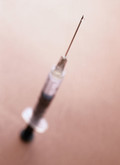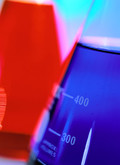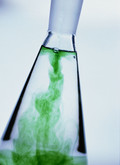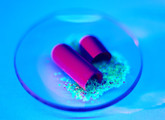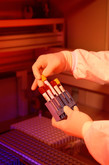Biosimilars/Research
Relative effectiveness and cost minimisation for biosimilars
The second of two articles on the use of economic evaluations to guide the use of expensive treatment.
Economic evaluation of biosimilars
Biological drugs represent a fast-growing segment of the pharmaceutical market. They make up 32% of drugs in the development pipeline and 7.5% of marketed medicines and account for around 10% of pharmaceutical expenditure [1].
India at the biotech crossroads
‘Indian biotech is at a crossroads. It must not only address the significant health needs of its domestic population, but also position itself to take advantage of the often more profitable global marketplace.’ [1]
Interchangeability (switching and alternating) of biosimilars
The Biologics Price Competition and Innovation (BPCI) Act of 2009 established an abbreviated Biologic License Application (aBLA) pathway for the approval of biosimilars in the US. This act also established the principles of interchangeability (along with switching and alternating) with the reference product. However, the concept of biosimilarity and interchangeability for biosimilars is very different from that of bioequivalence and drug interchangeability for generics [1].
Quantitative evaluation of bioequivalence
Generics
For approval of small molecule generics, FDA requires that evidence of average bioequivalence in drug absorption in terms of pharmacokinetic (PK) parameters be provided through the conduct of bioequivalence studies. This may be done using the area under the blood and/or plasma concentration-time curve and peak concentration (Cmax) [1].
US cancer researcher calls for additional biosimilar trials
One of the leading cancer researchers in the US has called for biosimilars manufacturers to undertake additional research. In an interview with The ASCO Post, Professor Mark Pegram, MD, Professor of Medicine and Associate Director for Clinical Research, Sylvester Comprehensive Cancer Center at the University of Miami Health System, Florida, USA, said, ‘Oncologists will be concerned about the safety of biosimilars. They will want to ensure that the chemistry, manufacturing, and composition are on par with the labelled product.’
US biosimilars: many barriers to overcome
EMA has been successful in devising a system for authorising the marketing of biosimilar products and 14 biosimilars are currently on the market in the major countries of the EU [1]. Generally, biosimilars are priced about 30% less than the originator product. This seems to be sufficient to gain significant (~ 30%) market share in a year or two though it keeps biosimilars very expensive. This is in dramatic contrast to the situation in America. In 2010 the ‘biosimilars statute’ (BLA) eventually came into force as the result of the Patient Protection and Affordable Care Act. The proposed rule involves two particularly onerous requirements that the EU process avoids.
The first is the question of degree of similarity.
Can biosimilar manufacturers learn from generic substitution issues
The substitution of generic prescription medicines for branded medicines is practiced in most Westernised countries, mainly because of its clear economic benefits. Patient experiences of generic substitution are mixed however, with many patients left confused or suspicious [1]. Given that a number of second-generation biosimilar compounds are expected to be approved within the next few years, and that biosimilar manufacturing costs are much higher than those of a simple generic, it is crucial for biosimilar manufacturers to avoid the uncertainty and mistrust that often accompanies generic substitution. Several recommendations have been made to help ensure that substitution pathways are streamlined and successful [1] but can any of these recommendations be applied to biosimilars?
US biosimilars: a report on FDA progress
This article reviews the steps being taken by FDA to implement the Biologics Price Competition and Innovation (BPCI) Act of 2009, enshrined in law in 2010 as the ‘biosimilars statute’.
Development of biosimilars is not an easy matter
By 2020 biological products with sales of around US$23 billion in the EU and US$29 billion in the US will be exposed to biosimilar competition [1]. As more and more biologicals lose their patent protection, it is no wonder that Big Pharma, the biotechnology industry and generics manufacturers, as well as regulatory agencies, are becoming increasingly interested in biosimilars [2].


